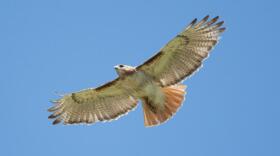Discover nature this week with ants in Missouri. You see them as they scurry about on driveways, lawns, and sidewalks -- or maybe even in your home! Regardless, ants seem to be everywhere. Some tunnel underground, while others reside in rotting wood or leaf litter.
Ants have compound eyes and two powerful jaws (mandibles), which serve them just as hands serve humans. All ant species live in societies, and each society is headed by a queen. Some societies are complex, with many different classes or castes. But most ant species in our area have simple societies with only a few kinds.
The queen lays eggs in the spring. When she is just starting a colony, she raises her first offspring to adulthood herself. When the first generation is mature, the ants, who are infertile females, will tend to the queen’s later broods.
Sometime in the spring or summer, the queen lays eggs that develop into fertile males and females. These ants have wings, and soon fly off and mate. The males die, but some of the females survive and become new queens, starting colonies on their own. Queens stay in the nest laying eggs for the whole colony. Workers wander far afield, risking their lives searching for food.
Ants leave a scent trail on the surfaces they’ve traversed. To return home, they retrace their steps, using scent-receptive organs on their antennae to smell their trail, communicating with each other using “scent signals.”
Most of the population in an ant colony at a given time is female, and virtually all the work in the colony is done by them. The males live briefly, and their chief function is to mate. By contrast, the females live and labor long: Individual workers may live six years, and queens as long as 15.
More information about ants in Missouri can be found online at MissouriConservation.org.



